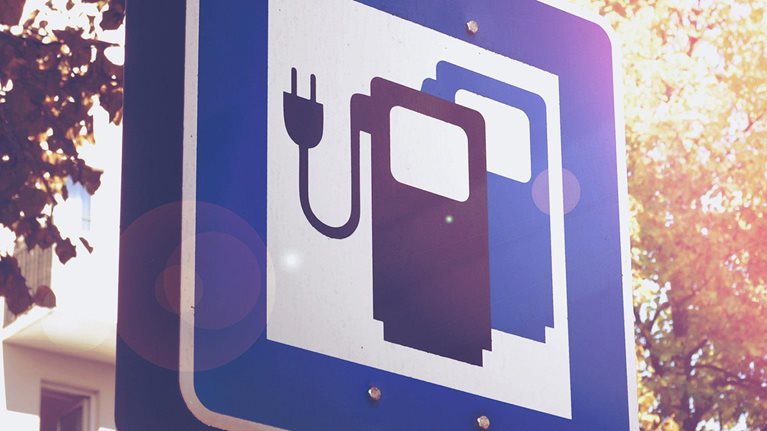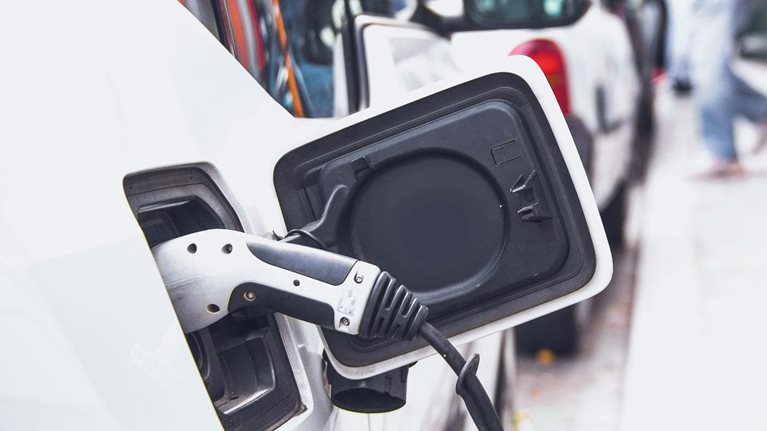Inventors patented the first electric bikes back in the 1890s, but their innovations never garnered the same attention as other early-transportation milestones, including the first subways and the Model T Ford. Today, however, several trends have converged to bring e-bikes out of obscurity. Sales of electric vehicles (EVs) are increasing as governments crack down on emissions. Meanwhile, innovators have introduced new technologies and business models that are breathing life into the market for small-format EVs (those with two or three wheels). Improbable as it may seem, e-bikes could finally be having their day.
To gain more insight into the burgeoning market, we examined worldwide trends for small-format EVs, looking at both geographic growth patterns and the forces shaping the industry. Our analysis shed some light on strategies that can help OEMs and other players succeed as small-format EVs gain traction.
A strong market for small-format vehicles
The sales figures for small-format EVs may initially seem modest. The market for two-wheel EVs (E2Ws) and three-wheel EVs (E3Ws) was valued at around $97 billion, or 4 percent of global auto sales. The sector has momentum, however, and global sales of E2Ws and E3Ws are increasing by more than 14 percent annually. (That figure excludes sales in China, which was an early adopter of small-format EVs and is thus experiencing slower growth.) By 2022, global sales of E2Ws and E3Ws could reach $150 billion.
It’s impossible to generalize about global sales trends, since transportation patterns and preferences vary widely by location, but some country-specific developments are striking. Take China: the country now accounts for around 30 percent of the global market for small-format EVs. What’s more, more than 80 percent of 2Ws in China are electrified, making it the dominant market by far in that category. The story may soon change, however, since growth of E2Ws is plateauing in China and surging in the European Union, Latin America, the Middle East and North Africa, and Southeast Asia.
India sells the largest number of E3Ws by far, and they now account for about half of all rickshaws in the country. By 2026, around 80 percent of 3Ws in India will be electric. One caveat: if more light commercial vehicles become electrified, they could become the default option for cargo transport, provided that their performance and economics improve.
Globally, we expect electrification to accelerate most quickly in the scooter and light-motorcycle segments. Electrification of heavy motorcycles will follow, but it won’t reach the levels seen with smaller vehicles.
Most E2Ws and E3Ws now rely on relatively cheap lead-acid batteries, but regulatory changes could compel a switch to the lighter lithium-ion power packs, which offer higher energy density and thus greater range. In China, where consumers have long had EVs with lead-acid batteries, replacement demand for vehicles with lithium-ion power packs could be high. Elsewhere, the transition will offer global players an opportunity to gain market share, since demand for EVs will increase as their range expands.
The forces driving electrification
Electrification is driven by a mix of regulatory push (policies designed to generate demand) and consumer pull (innate features or sales models that attract consumers). Here are the elements that are shaping the EV market:
- Environmentally friendly regulations and incentives. EVs are getting a boost from recent government regulations and incentives to reduce emissions. Many of the regulations favor EVs, since they reduce the carbon footprint by 65 to 70 percent, compared with internal-combustion-engine (ICE) vehicles. In China, for instance, the government banned the sale of ICE scooters in 2011.
- Falling battery prices and lower total costs of ownership. Battery costs typically represent around 40 percent of the bills of materials for EVs, but that could change. Over the next few years, prices are expected to drop to $90 to $130 per kilowatt-hour, from the current $220 to $280 per kilowatt-hour. That shift will decrease the total cost of ownership and potentially stimulate demand, especially among B2B buyers and members of the lower or middle B2C segments.
- Emergence of innovative go-to-market models. Some new models, such as those involving battery-as-a-service (BaaS), could reduce up-front acquisition costs for E2Ws and E3Ws. In addition to the lower prices, consumers may appreciate the convenience of BaaS, since emerging battery solutions allow refueling in under one minute. Future market share will increasingly depend on pairing one of those innovative models with the right product.
- Appeal of high-end connectivity. Several players have created connected E2Ws, with more in the works. A company in India, for instance, has created a popular second-generation e-motorbike. For consumers in the premium-2W segment, a high-end EV with connectivity may be much more appealing than a standard ICE vehicle.
Of course, other powerful forces are also shaping the market. McKinsey research shows that E2Ws and E3Ws have surged in worldwide popularity since COVID-19 began to spread, partly because people are avoiding subways and other shared-mobility solutions. That said, the growth of shared mobility and micromobility can also benefit the sales of E2Ws and E3Ws, as seen in India, Southeast Asia, and other regions over the past few years. Once the spread of COVID-19 is controlled, the resurgence of those trends could increase the sales of small-format EVs.

The unexpected trip: The future of mobility in India beyond COVID-19
A highly fragmented and evolving landscape
The E2W and E3W landscape contains multiple players, all competing intensely for market share. New entrants dominate in many regions and may prevent OEMs from achieving the same lead they hold in ICE vehicles. Technological advances are also introducing big changes, which are altering the traditional value pool. Disruptions, such as vehicle automation, electrification, consumer-facing offers, and data-enabled services, are predicted to account for around 20 percent of automotive revenues by 2030 (Exhibit 1).

Winning strategies for incumbents
No single recipe for small-format mobility will guarantee success for established OEMs, but a focus on five areas can help.
Designing modular, scalable platforms with open architectures
Open-architecture platforms that are both modular and scalable will allow OEMs to offer differentiated products at competitive prices for B2B and retail while enabling significant capital-expenditure synergies. While the platforms’ open architecture will make them suitable for many different vehicles, OEMs can still offer customized features for small-format EVs by building in-house capabilities in various areas, such as battery-management systems and power-train integration (Exhibit 2).

Creating disruptive front-end sales channels
An asset-light, digitally enabled front-end sales channel will facilitate customer interactions. Some top OEMs have even established digital-experience centers for that purpose. Companies could also benefit from the following actions:
- redesigning customer journeys and adopting a physical–digital go-to-market model that allows for both types of contact
- creating virtual dealerships or moving toward “dealerships on wheels,” where customers receive service at home
- providing technology training to sales representatives
With increased digitization, the direct-to-customer channel could account for 30 to 40 percent of overall sales.
Developing innovative business models
OEMs can improve their up-front price positioning by introducing innovative go-to-market models in leasing and financing for shared mobility and last-mile mobility use cases.
Reimagining the partnership landscape
Collaboration is more important than ever. Strategic partnerships and technology joint ventures can help OEMs secure core EV components. Likewise, partnerships with e-commerce giants, delivery players, dealer networks, fleet companies, and ride-sharing organizations may be critical when building demand centers. For infrastructure, OEMs could work with battery-swapping companies, charging-solution providers, and others to develop the ecosystem. Such open business models that include partners are already becoming more popular because they confer so many benefits (Exhibit 3).

Establishing a clearly aligned energy-backbone strategy
OEMs must invest in the required infrastructure to support their EV products, such as facilities for charging or swapping batteries. They should align that energy backbone with their selected business models. With battery swapping, for example, a player must ensure that the infrastructure supports its choice of an open model (in which multiple players participate) or a closed model (in which it owns the entire system). A strong energy backbone will fast-track customer adoption and could help shape the market.
Options for other players along the value chain
In addition to established OEMs, many other industry participants across the value chain will find emerging opportunities related to E2Ws and E3Ws.
First, consider energy companies and utilities. Faced with declining fuel demand, those businesses could hedge their positions by developing or acquiring EV-charging infrastructure. They could also capture upstream value by building capabilities in areas such as battery development and battery-management systems.
Similarly, original equipment suppliers could tap into the emerging opportunities associated with electric power trains. For instance, they could develop capabilities related to skateboard and platform development, or they could pursue partnerships to enter new product segments, such as on-board chargers. Some original equipment suppliers might also develop retrofit kits for ICE-to-electric conversions. Such kits would be popular with price-sensitive customers in many regions. In India, for instance, 3 to 4 percent of all E3Ws could be retrofits by fiscal year 2025.
New entrants are in a strong position to rewrite the rules of the game and could seek opportunities across the value chain, including those related to cell and battery technologies, parts and components, skateboards, EVs, and user platforms. They could then decide how they want to pursue the opportunities—for instance, by buying, building, leasing, running, or maintaining key value-chain elements.
Finally, financial institutions, including venture-capital firms, could play a key role in shaping the mobility ecosystem. In addition to supplying the required capital, they could create synergies with their portfolio companies.
The electrification of 2Ws and 3Ws continues to gain traction around the world, especially in emerging markets. Both established OEMs and start-ups will find opportunities to capture value in this competitive but exciting market, and other industry players could also see strong growth. Equally important, E2Ws and E3Ws will provide many consumers with affordable, environmentally friendly transportation options for the first time. Following the strategies we outlined can help industry stakeholders contribute to the momentum of this promising sector.


